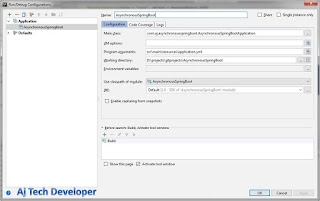How to setup Docker on Windows
Step 1: Check if Virtualization is enabled
Make sure your Windows system supports Hardware Virtualization Technology and that virtualization is enabled. To check this, when the machine is powered ON, go to BIOS settings and check Processor submenu or settings for Intel Chipset. Checkbox for Virtualization setting should be checked.
Step 2: Download Docker Toolbox for Windows
Download the Docker Toolbox for Windows from Docker Website. I have downloaded DockerToolbox.exe.
Step 3: Install Docker Toolbox
Install Docker Toolbox by double-clicking the installer: DockerToolbox.exe. I have installed it in the path: D:\Programs\Docker Toolbox
Step 4: Verify that Docker is installed properly
To start Docker, open command prompt, navigate to the Docker Toolbox installation directory and execute start.sh. Here is the command that I have used:
To start Docker, open command prompt, navigate to the Docker Toolbox installation directory and execute start.sh. Here is the command that I have used:
D:\Programs\Docker Toolbox>start.sh
Another bash window will open up. The terminal runs a special bash environment instead of the standard Windows command prompt. The bash environment is required by Docker. This bash window looks as below:
In this same bash window you can type the following command to check Docker version:
Then type the following command:In this same bash window you can type the following command to check Docker version:
docker --version
docker run hello-worldThe command does some work for you, if everything runs well, the command’s output looks like this:
$ docker run hello-world
Unable to find image 'hello-world:latest' locally
Pulling repository hello-world
91c95931e552: Download complete
a8219747be10: Download complete
Status: Downloaded newer image for hello-world:latest
Hello from Docker.
This message shows that your installation appears to be working correctly.
To generate this message, Docker took the following steps:
1. The Docker Engine CLI client contacted the Docker Engine daemon.
2. The Docker Engine daemon pulled the "hello-world" image from the Docker Hub.
(Assuming it was not already locally available.)
3. The Docker Engine daemon created a new container from that image which runs the
executable that produces the output you are currently reading.
4. The Docker Engine daemon streamed that output to the Docker Engine CLI client, which sent it
to your terminal.
To try something more ambitious, you can run an Ubuntu container with:
$ docker run -it ubuntu bash
For more examples and ideas, visit:
https://docs.docker.com/userguide/
For any further help on the installation on your machine, you can refer to the Docker Website.



Comments
Post a Comment